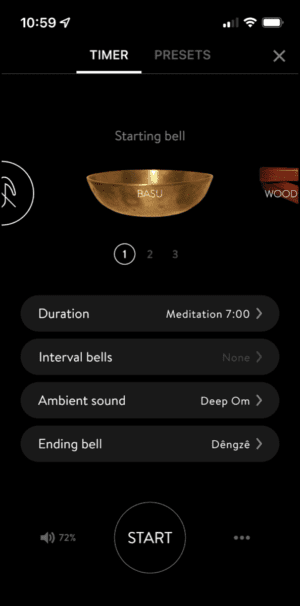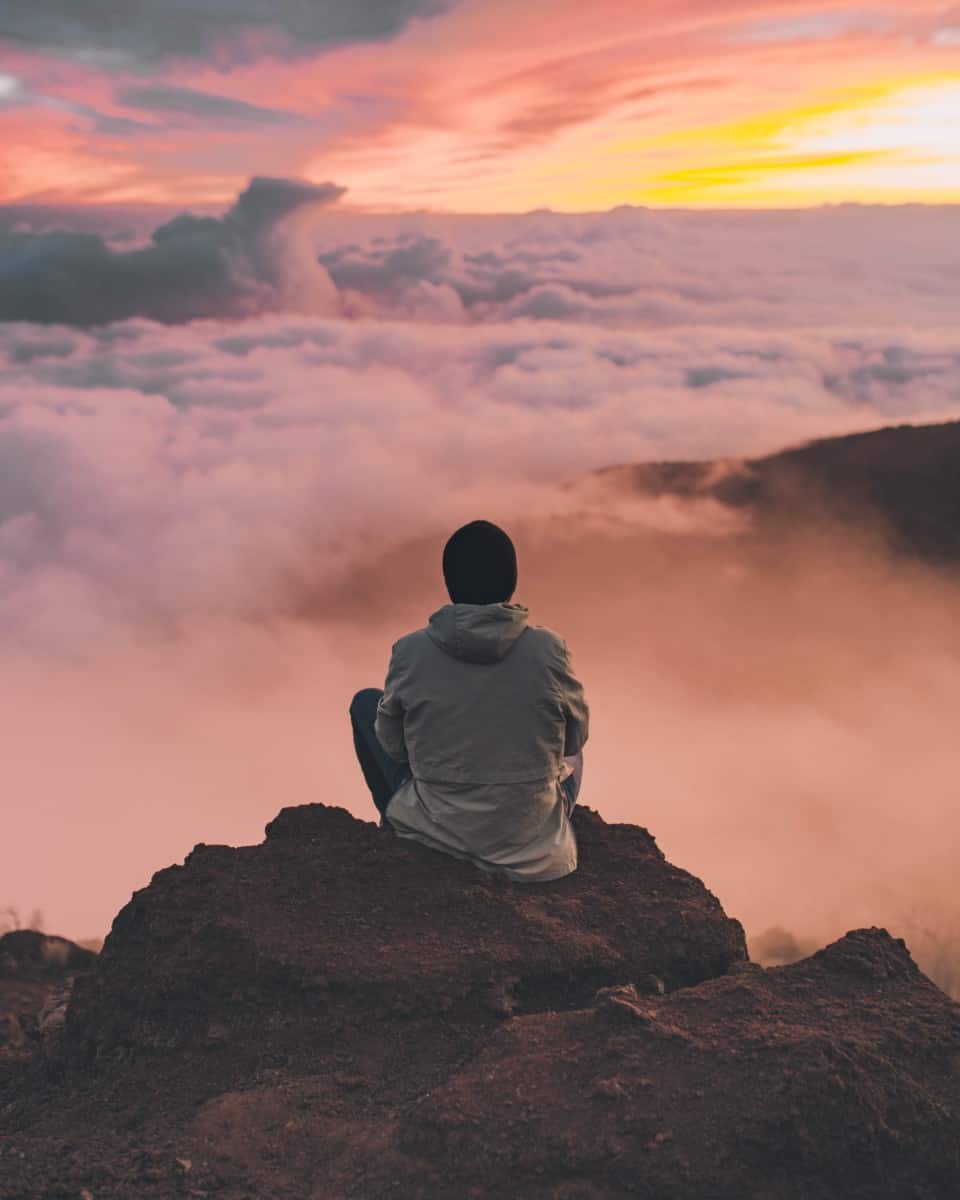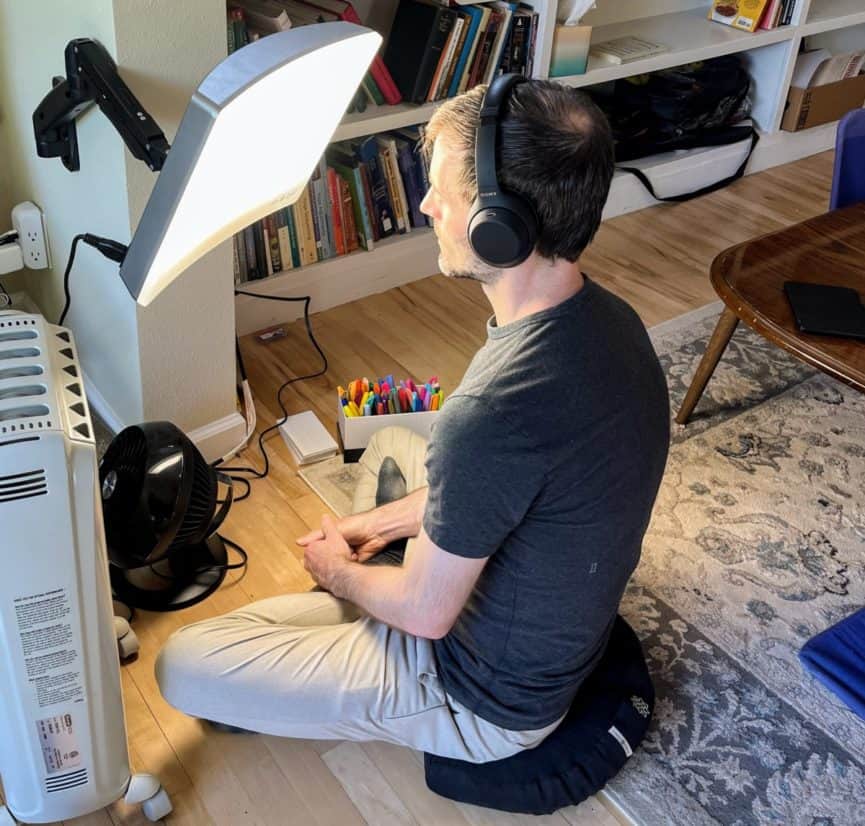In Part 1 of this series, I explained why I think meditation is the most important skill for virtually anyone to learn—especially Thinkers in MBTI.
In Part 2, I gave step-by-step instructions (9 steps) for learning to meditate, whether you’re an absolute beginner or you’ve tried before but struggled to make the practice work for you.
Today, I’m going to wrap up by exploring a variety of ways you might progress through your practice.
Reading Time: 19 minutes
Step 10: Explore different styles, traditions, teachers, and apps
The practice of meditation is thousands of years old, and a wide variety of traditions have been developed all over the world. Meditation is such a vast and deep subject that being “into meditation” is kind of like being “into personal growth” or “into productivity”—there are all sorts of approaches you can take.
For example, Somatic Meditation is about focusing on sensations in the body, and Loving-Kindness Meditation involves specifically focusing your attention on sending love to yourself and others (often while silently repeating a set of phrases to yourself).
I recommend you keep it simple for your first few months before branching out—just stick to counting the breaths as I’ve described.
But, guided meditations can be helpful too, especially if you find it hard to keep your eyes closed for 5 minutes or you keep beating yourself up for “failing” in some way.
There are all sorts of meditation teachers out there who offer free guided meditations. I’ll point you toward some of my favorites.
Start with these as you begin your journey:
| Khandro Rinpoche (Tibetan tradition) explaining what meditation is (3 minutes): | angel Kyodo williams (Zen tradition)’s meditation for connecting (5 minutes): |
One more short good one that’s not on YouTube: Sam Harris (secular / neuroscience perspective) explaining the concept of beginning again.
Then, you can move on to these once you’ve practiced for at least a week or two:
| Sam Harris (secular / neuroscience perspective)’s mindfulness meditation (9 minutes): | Tara Brach (Buddhist mindfulness tradition)’s RAIN meditation for self-compassion (11 minutes): |
| Jack Kornfield (Vipassana / American Theravada Buddhist tradition)’s breathing meditation (9 minutes): | Sara Eden Gally (somatic body-awareness)’s mindfulness meditation (15 minutes): |
| Kelly McGonigal (psychology / neuroscience perspective)’s body scan meditation (18 minutes): |
Here are several deeper (but still short) ones for after you’ve been practicing for a couple of months:
| Tara Brach (Buddhist mindfulness tradition)’s sensory presence meditation (11 minutes): | Sharon Salzberg (Theravada Buddhist tradition)’s meditation on compassion (10 minutes): |
| Pema Chödrön (Shambhala Buddhist tradition)’s Tonglan meditation (11 minutes) | Lama Rod Owens (Tibetan Buddhist tradition)’s “touching the Earth” meditation (8 minutes) |
| Alan Watts (Zen tradition)’s guided meditation with music (10 minutes)
P.S. If you’re a fellow fan of EDM music and you enjoyed that clip from Alan Watts, samples of his meditations are featured in a lot of awesome songs: Come Together by Nox Vahn & Marsh, Everything by Said the Sky, and Meaning of Life by Rameses B, among many others. |
Alan Watts (Zen tradition)’s same guided meditation but without music (10 minutes) |
| Jon Kabat-Zinn (Zen tradition / secular mindfulness-based stress reduction)’s lying-down “lake” meditation (8 minutes) |
Some other options:
I’d like to introduce you to two other traditions as well because I’ve found them to be particularly intriguing.
Vipassana:
The first is Vipassana, which is a Buddhist meditation style focused on observing bodily sensations. It originated in India 2,500 years ago, and it’s especially well-known for its 10-day silent retreats.
The Goenka tradition specifically offers these retreats all over the world for free (they’re run on a voluntary donation basis). These retreats can be incredibly powerful (and challenging), so I recommend working up to it.
Zen Koans:
The second is the practice of using Zen koans to meditate. Koans are short phrases that sound a bit like logical conundrums.
I haven’t yet prioritized going super deep into this practice yet, but my understanding is that they’re meant to be almost like mind viruses that purposefully short-circuit your analytical mind as a way of reaching a deeper part of you.
The idea is that you sit with any given koan for a while (there are a few thousand), and eventually it might trigger a taste of Awakening, where you have the temporary experience of non-duality (i.e., “we’re all one”).
The wildest part to me is that a master teacher can apparently test you to determine whether or not you’ve truly internalized a given koan. Here’s the Tim Ferriss interview with Zen Master Henry Shukman where I learned the most about this subject.
The lineage of meditation
I also want to name that there are a lot of white people (including myself and some of the teachers above) who guide meditations, but this was a practice that originated in India and China.
I’m not saying there’s anything wrong with white teachers, but it’s also important to name the rich cultural lineage at play here.
Many Buddhists and Hindus are happy to see these teachings spread throughout the world. And, it’s also important for us in the “West” to recognize that we’re tapping into ancient sacred traditions when we practice meditation.
Even if you don’t consider yourself to be a spiritual person, see if you can feel some of the weight behind these practices that have been passed down for many generations to find their way to you. Especially if you notice yourself dismissing any of this or judging the techniques or teachers harshly, see if you can practice humility and curiosity around this deep well of knowledge, tradition, and wisdom.
I’d been a strong atheist for most of my life, but meditation was one of the main pathways to reaching an appreciation in myself of the concept of something being sacred.
Apps
With more and more research supporting the wide-ranging benefits of meditation, an entire ecosystem of apps has sprung up.
I’m going to recommend three.
- If you like something approachable, friendly, and practical (or you’re an F in MBTI), I recommend Headspace. I credit that app with helping me really begin to solidify my daily practice years ago.
- If you like something analytical, research-backed, and precise (or you’re a T in MBTI), I recommend Waking Up, by neuroscientist/philosopher/skeptic Sam Harris. (That special link will give you 30 free days.) Sam’s app even includes a series by Henry Shukman, the Zen koan person I mentioned earlier.
- If you like something that offers a ridiculously huge library of guided meditations from teachers all over the world, I recommend Insight Timer. This is the app I personally use every morning, but not for any of its guided meditations. It also has a simple timer functionality that lets you select starting and ending bells (I like “dengze” and “shurong”). But the killer feature for me is the “ambient sound” option. I like meditating with a constant repetitive sound that’s forceful enough to block out small sounds around me but not harsh or annoying. My favorite one is “golden om”—the sound of monks chanting.

Bonus: Brain.fm is another interesting app. I’m not 100% sold on the science they promise (using special types of sounds to encourage “neural phase locking”), but I like switching things up now and then to meditate with the combination of ambient music and repetitive beats that they offer in their meditation mode. I also use Brain.fm frequently for writing when I’m finding it hard to stay focused.
Step 11: Apply the meditation skill outside of meditation.
Ultimately, meditation offers value in two ways:
The first is how good it feels during the meditation itself.
If you’re just getting started, it probably feels strange to hear that it feels good to me. You might still be dealing with a lot of restlesnes and frustration (as I did for years).
But as going inward in this way became more familiar and easful, it began to feel amazing—like taking a hot, soothing bath, but for the mind instead of the body.
In my experience, it becomes a unique mix of relaxing pleasure and sharp mental clarity. It allows you to explore challenges and questions from a different perspective than your usual consciousness.
Then there’s the second way that meditation is valuable: when you’re not meditating.
This part is much harder. You’re not just sitting there comfortably safe with your eyes closed. You’re out there in the open world dealing with difficult people and challenging situations.
It’s harder, but it’s also more valuable. After all, only a small portion of your life is spent on the meditation cushion. What would it be like to bring that same quality of easeful awareness to your entire life?
During meditation, you practice noticing your experience. You identify when distractions come in and your focus strays. Then, you consciously redirect your attention back to your breath.
Think about how often you could apply that to your life—noticing when your focus has drifted away from the task at hand and willing yourself back to what’s important to you in the moment.
You can bring that highly-nuanced form of attention to everyday experience.
This is mindfulness.

Here’s what it look can look like:
- When you’re eating food, focus all your attention on your sensory experience.
- Eat a meal alone and slow way down. Smell your food before tasting it. Move it around in your mouth. Feel its texture against your tongue. Concentrate on all the different flavors at play. Notice whenever your attention wanders away from the food, then gently bring it back.
- (This practice helped me appreciate sashimi much more deeply—really feeling the texture of the fish, rolling it around in my mouth, taking a full 30 seconds for a single piece, and noticing what a difference even the tiniest bit of wasabi makes.)
- When you’re walking down the street, focus all your attention on what’s around you.
- Look down at the ground beneath you. Look up at the sky. Stop to touch the bark of a tree. Listen to all the sounds around you.
- Notice if you feel embarrassment if someone catches you touching a tree or smelling a flower. What’s that like to be embarrassed? Where do you feel embarrassment in your body? How do you know you’re embarrassed?
- Catch yourself if you notice your attention shift to the past or future instead of the present. Imagine that you’re on vacation and you’ve never been on this street before.
- When you’re having a conversation with someone, focus all your attention on that relationship.
- What are they saying on the surface level, and what are they really meaning beneath that? How do you feel hearing them say that?
- Notice as a response begins to form in your mind and hold off on saying it right away. Notice if that response shifts if you let it linger there.
- Notice what happens if you speak slowly or quickly. Notice if you feel drawn to asking something but you’re too afraid to do it. Notice if there’s some way you’d like this person to see you or relate to you that you’re not experiencing from them.
- Pay attention if your attention wanders away from this conversation. What made it wander? What would happen if you told your conversation partner that your mind had wandered? Don’t analyze all that with your head—notice how these questions make you feel.
All of that is the practice of mindfulness.
Are you beginning to appreciate how learning meditation is the springboard to deepening virtually every aspect of life?
Sample Approach (12-week plan):
Just like with learning how to be more productive, there are all sorts of ways to approach learning meditation.
I can’t claim to have rigorously tested a variety of appraoches to see which is most effective. So, I encourage you to just notice where you feel drawn.
Maybe you like taking things slow to make sure they stick. Maybe you prefer to dive into the deep end right away. Maybe you like piecing together your own unique approach by taking bits of several others. Or maybe you like signing up for a guided plan through an app.
I’ve tried all sorts of techniques over the years, so here’s what I might recommend if someone asked me for step-by-step instructions to begin their learning:
Week 1:
Practice sitting down to meditate once a day, ideally at the same time and in the same place.
Make yourself comfortable. Then, simply close your eyes for one minute of silence. If you’re in a noisy environment, use earplugs, white noise, or noise-canceling headphones.
You can use an egg timer, a simple smartphone timer app, or a more advanced app like Insight Timer that allows you to set a pleasant starting and ending bell.
I encourage you to do this every day, though sometimes it’s helped me to have one consistent day off per week (always the same day so I could look forward to it and feel a sense of freedom).
Week 2:
If week 1 was easy for you, try increasing to 3 minutes a day.
If it was even a little challenging, try just 2 minutes. Also, try to experiment with meditating at a few different times of day and in a few different locations to see what works best for you.
Again, notice if you’re holding tension in your body somewhere. This should not be a physically uncomfortable practice.
Weeks 3-4:
Move up to 5 minutes.
You might begin to play with adding sounds. I like the Insight Timer app with the Golden Om ambient sound. But, you can also search YouTube for “meditation sound” and find one you like—singing bowls, nature sounds, etc.
Weeks 5-6:
Try one of the ~10-minute guided meditations I linked to earlier.
For the rest of the week, you can try 10 minutes, or go down to 7 if that feels too challenging. You might alternate between silence, repetitive sounds, and guided voice meditations.
Weeks 7-8:
Aim for 10 minutes a day, and really focus on noticing the quality of your experience.
It’s not just about forcing yourself to return to the breath when you’re distracted. It’s about noticing what each micro moment of that is like: noticing the distraction, noticing any judgment or other feelings that come up, noticing what it’s like to redirect your attention, etc.
Weeks 9-10:
Try moving up to 15 minutes a day, or 5-10 minutes twice a day if you’d like to experiment.
You might try something different one day like a walking meditation or a lying-down meditation. Experiment with different techniques like Numbers, Naming, or Clouds that I described in Step 6 of the previous post.
Weeks 11-12:
Begin to explore following your thoughts and “surfing” as I described in Step 7 of the previous post. See how that feels.
Weeks 13+:
Pick your favorite guided meditation from the selection I linked to earlier in this post, and search YouTube for more guided meditations by that person.
Begin to explore other meditation traditions, or just keep doing whatever technique works well for you.
Try a longer 20-minute or 30-minute one. Try reducing down to 7-8 minutes and see if maybe that’s enough for you. Notice what you lose with a shorter meditation or what you gain with a longer one.
Series Takeaways:
I know that’s a lot to take in. Strangely, meditation is both extremely simple and incredibly complex. You can learn how to do it in a few minutes, and you’ll keep uncovering new layers after decades of practice.
If you enjoy games like chess where there are always more nuances to be learned, you’ll eventually find the same level of complexity in meditation. True self-awareness is ultimately the greatest game of existence.

As you ease into this practice, here are 10 key ideas to keep in mind:
- Pick the right location and time of day for you.
- Make sure you’re in a comfortable position with as few distractions as possible.
- Notice how you’re feeling before you begin and how you feel when you finish.
- Set a timer (and make sure it has a pleasant alarm sound!). Start with just one minute, then work your way up.
- Start to tune into your breath. Count the in-breaths and out-breaths up to 10, then reset back to 1. I see the “count your breaths to 10” as kind of a safety valve—a consistent structure to return to if I’m getting lost or if I’m having a particularly stressful day. When I’m feeling super expansive, I can allow myself to stray and explore some thought-chains (like that “surfing” analogy), but otherwise it’s useful to just return to the counting whenever you feel yourself getting overwhelmed.
- As you notice thoughts come in and your attention wanders, gently shift your attention back to the breath.
- Try to hold all this loosely and gently, not tightly and rigidly. Don’t beat yourself up if you don’t do something “right.”
- Try not to analyze your experience through your conscious logical mind as you go (“am I doing this right? is this too fast or too slow? am I noticing some feeling here or am I imagining it?”). As those thoughts and judgments come in, gently notice (“ah, another thought!”) and then bring your attention back to the breath. You can analyze your experience all you want when it’s done.
- Keep going till the timer goes off. Try to resist opening your eyes to check how much time is left along the way. When you’re done, check how you feel. Sit there for a moment and notice how the world feels around you with your eyes open now—don’t just immediately pull out your phone and check your email.
- Learning any new habit can be hard, especially one that is all about cultivating a completely different mental state. It’s perfectly normal if it feels challenging. Keep trying.
Most importantly:
- Make yourself comfortable. If you’re holding yourself rigid or forcing some posture, you’re doing it wrong.
- If your attention drifts, you’re not doing it wrong. Just notice and gently come back to the breath. Your only job here is to notice your experience.
- When you’re done, check how you feel. Savor it. Did you experience anything that you want to think more about or take action on? Don’t immediately pull out your phone.
Remember: It’s not about completely clearing your mind—that’s virtually impossible.
The practice of meditation is being with your experience, however it is. It’s noticing when your attention has strayed and returning to focus.
Noticing you’ve strayed isn’t a mark of failure—it’s literally the exact muscle you’re building. Each time you lower your arm in a bicep curl isn’t a failure—it’s the very exercise you’re doing to build your biceps.
I’m excited that you’ve made it to this point. There’s so much richness awaiting you along this path.
Thanks for reading, and thanks for prioritizing this in your precious life.
April 2023 Update:
I’ve realized how overwhelming it can be out there to new people wanting to develop a meditation practice.
There are so many apps, teachers, and approaches that even choosing a guided meditation to listen to can feel overwhelming.
That’s why I created my free 7-day guided meditation series—for complete beginners (and beyond). I hope you find it valuable.

